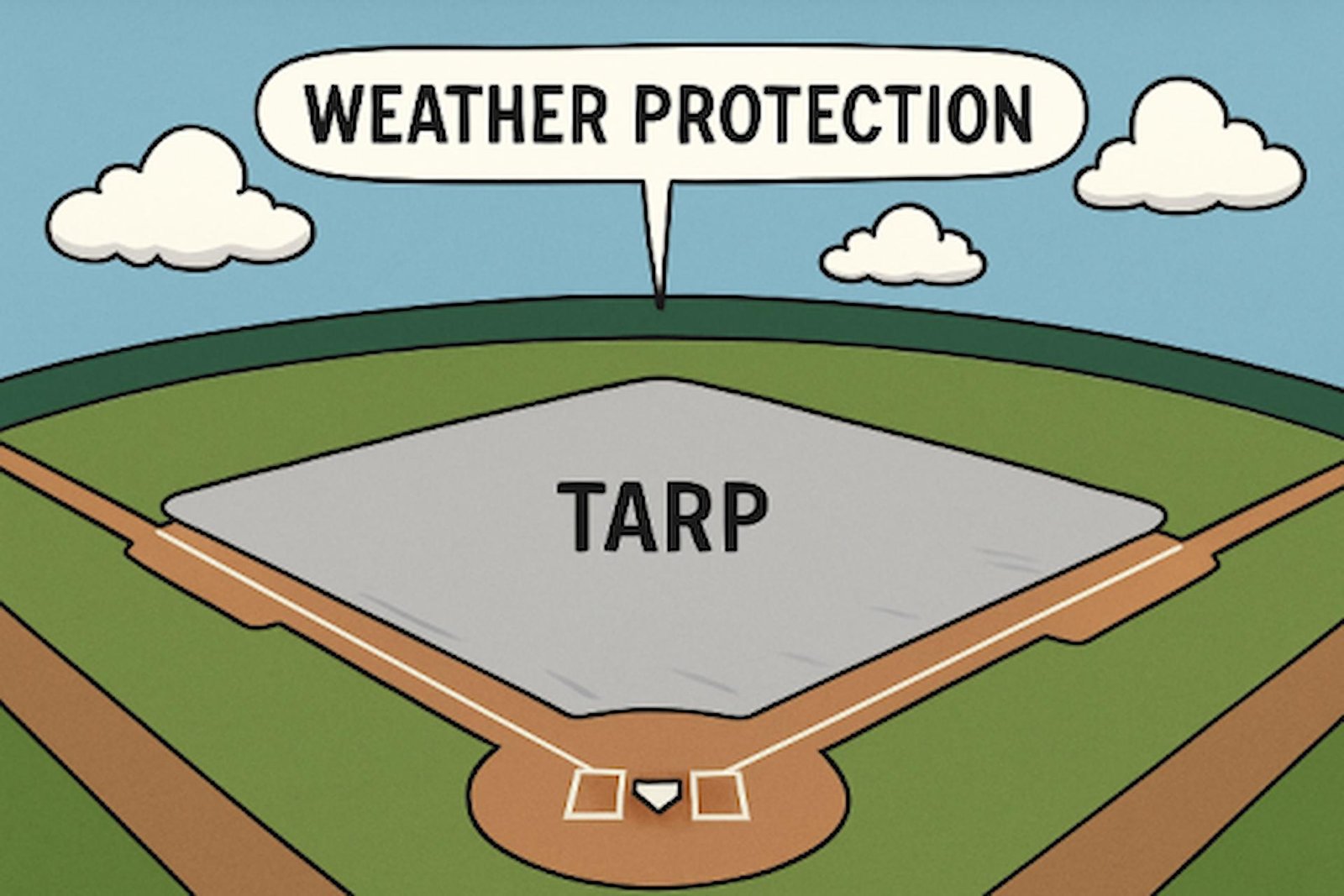Table of Contents
- Importance of Field Grading
- Utilizing High-Quality Field Covers
- Implementing Advanced Drainage Systems
- Adopting Drought-Resistant Turf
- Monitoring Air Quality and Heat Index
- Community Involvement in Field Maintenance
- Conclusion
Baseball’s unique character is shaped by its connection to the natural environment, but this same relationship means fields are vulnerable to unpredictable weather. From heavy rain and flooding to scorching heatwaves, natural elements can disrupt games, damage playing surfaces, and pose safety concerns for athletes and fans. Protecting the field goes beyond routine upkeep, requiring robust strategies to shield the game’s foundation from the elements and ensure playability season after season. Employing field grading, advanced drainage, and a tarp on baseball field can help mitigate weather risks, prevent costly maintenance, and extend field longevity.
Rain, wind, or drought can quickly transform a well-manicured diamond into an unusable mess. To minimize disruptions and safeguard investments, field managers and communities implement innovative approaches and collaborate on sustainable solutions. These initiatives keep the field safe and attractive and boost player performance and community pride, ensuring that America’s pastime endures for generations.
Importance of Field Grading
Consistent field grading is the primary step toward ensuring effective water management. The process involves carefully sculpting the field’s surface so water flows away from the infield, preventing puddles or muddy spots that delay games. Proper grading minimizes danger zones that threaten player safety and game continuity. Facility managers regularly evaluate field slopes, making minor corrections to keep rainfall from pooling. This attention to detail maintains a level, safe surface and supports quicker recovery after storms, reducing downtime and repair costs.
Utilizing High-Quality Field Covers
Investing in superior-quality field covers is a proactive measure against rain delays and turf damage. These tarps, engineered for durability and weather resistance, act as a barrier over essential areas like the infield, pitcher’s mound, and home plate. Choosing the right material and anchoring system ensures that the cover stays put under high winds, preventing tears and keeping the soil beneath dry and playable. Maintenance of the covers—regular cleaning and inspections—extends their lifespan, guaranteeing they’ll be ready when storms threaten. For more on covers’ critical evolution and benefits, see this analysis in Baseball Tips: The Evolution of Infield Rain Tarps: Protecting America’s Diamonds.
Implementing Advanced Drainage Systems
Beyond surface management, advanced drainage infrastructure is vital for weather resilience. Techniques like sand slit drainage—installing fine gravel-filled trenches beneath the turf—allow for rapid water dispersal away from the playing surface. Fields outfitted with these systems withstand heavy rainfall better and dry out faster, enabling games to resume quickly with minimal field damage. Integrated solutions may combine subsurface drains, grading, and carefully selected turf to offer full-spectrum protection, helping teams maintain playing standards regardless of regional weather extremes.
Adopting Drought-Resistant Turf
Drought presents a distinct set of challenges in many baseball regions, where water restrictions or prolonged dry spells threaten traditional grass resilience. In response, groundskeepers and researchers are turning to drought-resistant hybrid turf varieties that require less water but remain robust under high foot traffic. By blending tough native grasses with advanced hybrids, these surfaces preserve playability while significantly reducing irrigation needs. Teams adopting this strategy bolster sustainability and cushion themselves against climate fluctuations and local water shortages. For further reading, Athletic Business explores advances in field protection: Layer of Protection Keeps Fields Looking, Playing Their Best.
Monitoring Air Quality and Heat Index
Weather protection also means protecting athletes’ health from extreme heat and air pollution. Teams are now using technologies like wet bulb globe thermometers, which measure temperature, humidity, sunlight, and airflow. This comprehensive approach determines when conditions are too dangerous for play or practices, supporting timely safety decisions. Monitoring the Air Quality Index (AQI) is also increasingly critical in regions affected by wildfires or urban pollution, ensuring games aren’t played when respiratory risk is high. Heat safety campaigns emphasize hydration, shaded dugouts, and scheduled breaks during games, reducing the threat of heat-related illness for those and spectators alike.

Community Involvement in Field Maintenance
Fieldervation isn’t just a technical challenge—it’s a communal effort. Local non-profits and neighborhood volunteers often rally to upgrade and maintain baseball fields, especially in areas where resources are limited. Partnerships between private companies, municipal departments, and youth leagues have led to significant facility improvements, ranging from new infield surfaces to enhanced irrigation systems. These collaborations empower communities to take pride in their ballparks and promote youth participation. Volunteer-driven field days, where families and local businesses pitch in for upkeep, cultivate lasting bonds, and foster a spirit of stewardship for America’s pastime.
Conclusion
Protecting baseball fields from the unpredictable weather challenges requires commitment, innovation, and teamwork. Through careful field grading, investment in durable covers, state-of-the-art drainage systems, water-smart turf, and vigilant monitoring of environmental conditions, baseball remains accessible and enjoyable to all. It’s the synergy between modern technology and good old-fashioned community spirit that truly ensures baseball diamonds stay safe, playable, and welcoming in every season.





